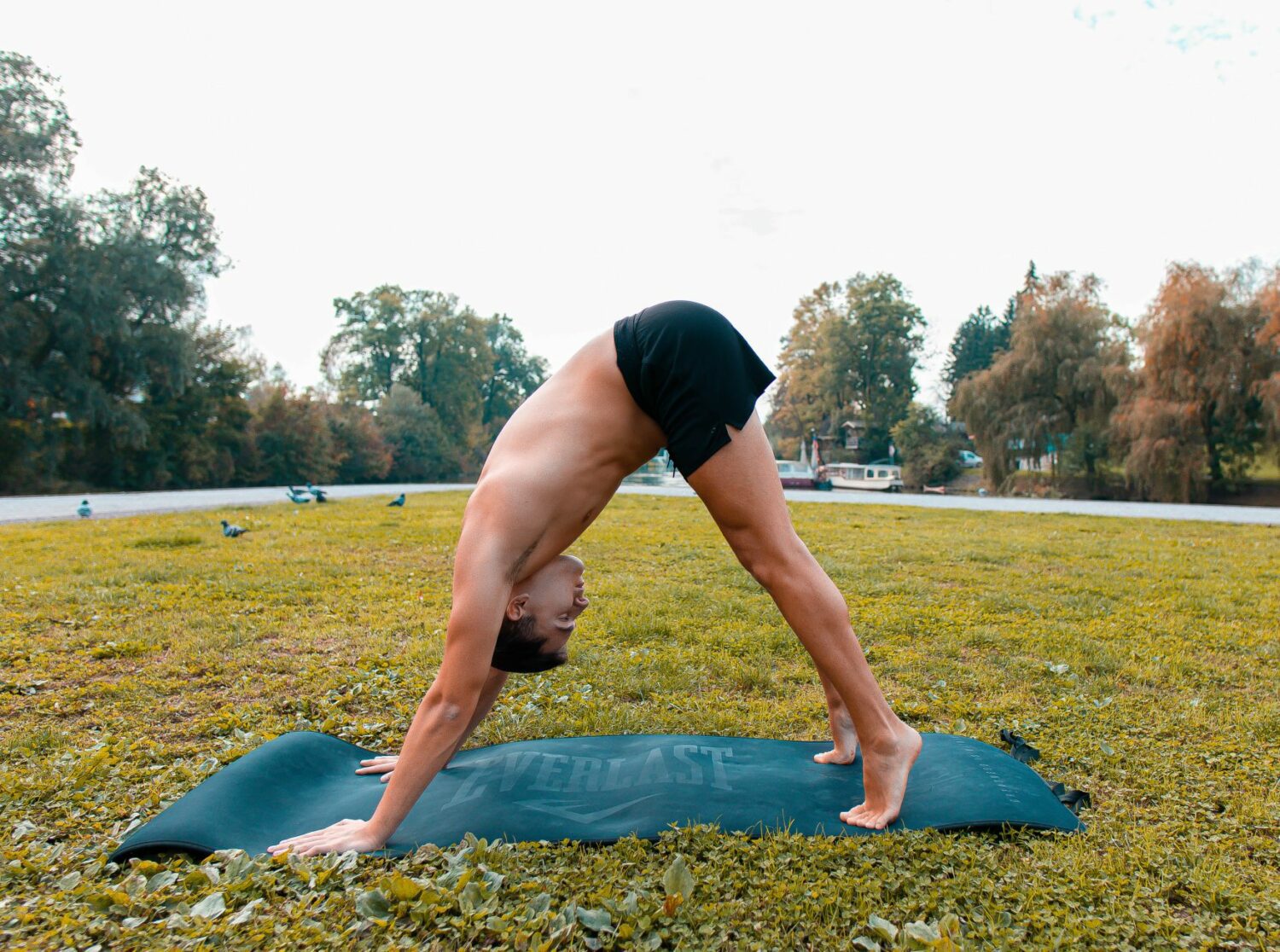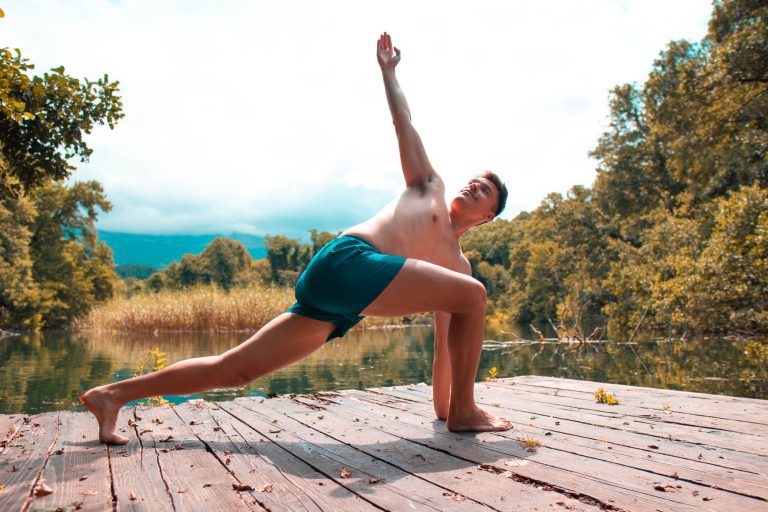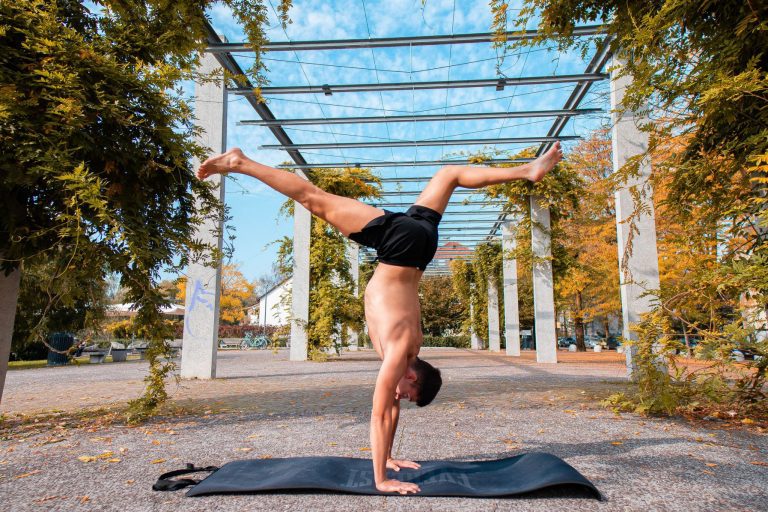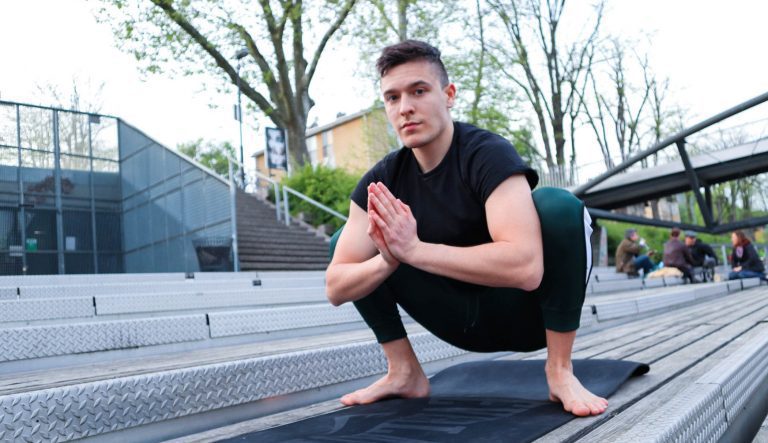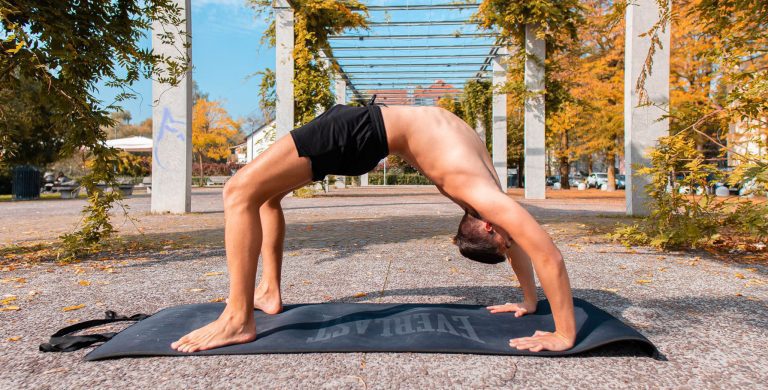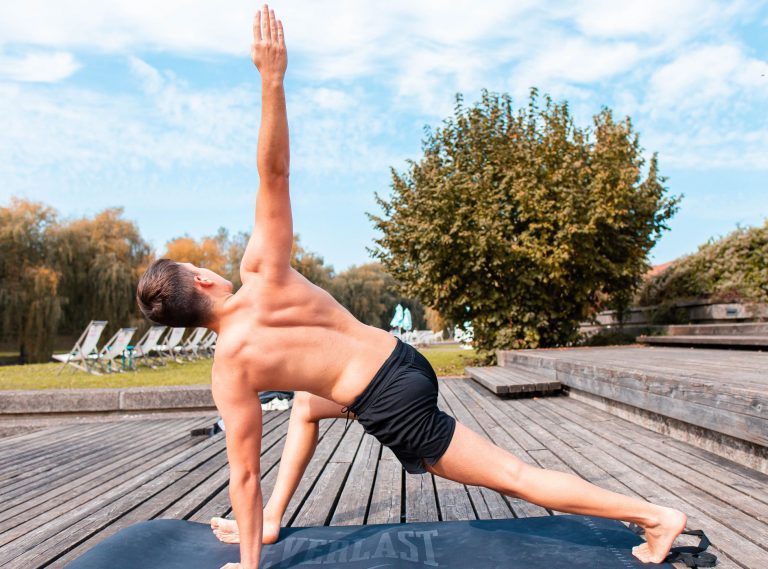Vinyasa Yoga Flow | Versatile & Dynamic Yoga Style + Benefits
Vinyasa Flow
Vinyasa Yoga flow is a contemporary style of yoga, of which the main characteristics are smooth transitions and breathwork. Vinyasa flow is a moving meditation practice. Poses are done with complete awareness and proper form, therefore transitioning from one pose to another, faster than usual.
Non-Fixed Practice
Vinyasa flow is done in a non-fixed sequence of poses. Non-fixed means it doesn’t follow any rules, strict schedule, or order in between. Being a practice with high adaptability, it is suitable for most yogis. No two yogis do the exact same vinyasa flow practice. This is the beauty of this practice, it can be individualized and practiced by beginner, intermediate and advanced-level practitioners.
To learn more about different yoga types, feel free to check out:
- Iyengar Yoga – Poses, Benefits And Props
- Ashtanga Vinyasa Yoga | 8 Limbs of Yoga
- Power Yoga for Strength, Balance, and Physical Fitness
Sanskrit Meaning
In Sanskrit terms, it is a combination of the prefix vi – “in a special way” and the term nyasa – “to place”. This practice presents consciousness in motion. Its meaning is connection; this is represented by a smooth transition from pose to pose.
Combination of Power and Ashtanga Yoga
Vinyasa is a combination of different types of yoga practices. It is always unique by itself because it can be changed and adapted to our own needs. Most commonly, we see similar characteristics of power yoga and ashtanga yoga as a part of the vinyasa flow. It is not a strict, defined practice but rather a ruleless movement flow practice. Also, parts of Jivamukti and Baptiste Yoga are present.
Mindful Movement
Mindfulness is pretty important in vinyasa. Moving fast does not mean we are moving without precautions, with an improper form or mindless movement. Body awareness is just as important as proper breathing techniques and transitions. The only difference here is, we do not rest while doing the poses or between transitions, the only exception is the child’s pose in which we smoothly transition.
“The body benefits from movement, and the mind benefits from stillness.”
-Sakyog Miphan
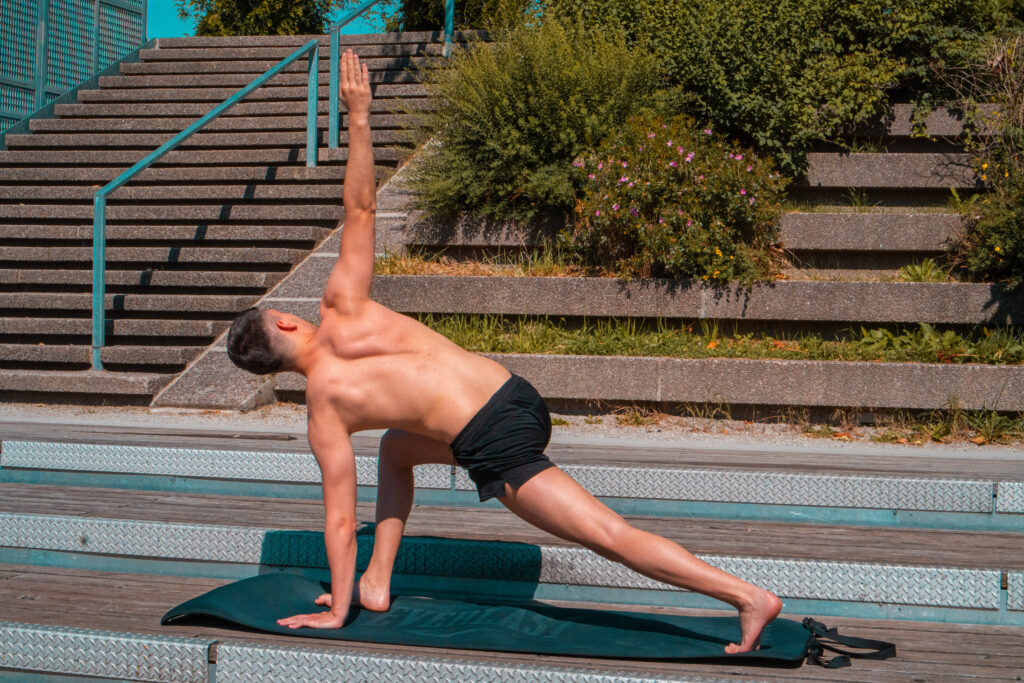
Vinyasa sequence
Vinyasa describes a full three-pose sequence. It is the plank (in which we usually go from the downward dog), then slowly transition to chaturanga (lowest position of a push-up, being lifted from the ground) and upward facing dog (straight arms, head up to the sky, hips lifted off the floor).
Synchronize Breath to Movement
Synchronizing breath with movement through this practice leads to breath control in challenging life situations. The main goal of vinyasa is to control our breath from becoming too shallow, short, or holding our breath. When the practice is too hard, we stop. When it is too easy, we do it faster. Breath control in hard poses and transitions teaches us correct breathing patterns.
Difference: Cobra vs. Upward Facing Dog
The difference between cobra and upward facing dog is that in cobra we try to align hips, knees, and ankles firmly to the floor not locking the elbows, while in upward facing dog we have our hips off the floor, bigger curvature in the spine and straight arms.
Adaptability
The ability to change, also known as plasticity is what separates this practice from Hatha or Bikram yoga. It can be changed depending on the level of our practitioner’s experience and can be trained at beginner, intermediate or advanced levels. Every teacher can make it suitable for everyone and switch it up to keep students curious.
Fun
Most of all, people love vinyasa flow for its fun. It is never the same. There’s always something more or less of it and practitioners love this surprise, this uncertainty. Progression into the poses is also enabled at a higher level. The fluidity of movement is fun for most of us, rather than standing and enduring in one pose. Ability to be practiced by all ages, sexes, and sizes.
Alignment
Alignment through the proper form in dynamic movement is important, so we practice bringing our awareness back to our body. The real practice is internal. To align our body movement from one pose to the next with our breath takes tremendous awareness of our breath, this is why we call it moving meditation.
History
Vinyasa flow was developed by Sri Krishnamacharya, it is part of the Ashtanga Yoga lineage. He taught Patthabi Jois, who then taught in Mysore. It was a moving meditation practice, connecting movement and breath to improve mindfulness and deepen body awareness. Popularized in the West, taught in the first half of the 20th century.
Connect mind, body, and breath
Offering a connection between body, mind, and breath, this practice is important in our everyday struggles. How we deal with things when we are feeling aggressive, angry, depressed, excited, stressed, anxious or fearful is affected by our breath, which becomes shallow, short, and fast. We tend to close our abdomen and chest and don’t get enough oxygen in our body
Ujjayi Breath
Ujjayi is a breathing technique often practiced with asanas in the Ashtanga yoga sequence. It is s mind-calming and body-warming breathwork in which we breathe through our nose extending the lungs while pushing our diaphragm down. First, our lower belly fills with air, then the lower rib cage, then air fills the lung and throat. This technique is done with slight throat contraction.
Dance
The fluidity of this practice makes it look and feel like a dance. This is huge because we slowly understand the connection of each part of our life, dissolving the sense of separation between each act or period. Vinyasa can be also done with music in the background, making it feel even more feel like a dance.
“Yoga is a dance between control and surrender.”
-Joel Cramers
Flow State
Vinyasa FLOW got this name with purpose. When we move with a higher pace, flowing and transitioning from pose to pose, controlling our breath, and being completely mindful and aware of our body and emotions we come to a state of flow. This is a state of effortless effort – a place where everything becomes easy. We lose a sense of dimension, height, weight, and temperature and it makes us feel alive.
Continuance
Vinyasa flow as dance, movement transition, and breathwork practice stands out. It represents a certain rhythm of movement, pulsation, and cycle. It represents connection, forever evolving, changes, asks for consistency, and gives us integrity.
Constant Change
Parinamavada – the idea of constant change is part of vinyasa’s perspective. Humans are usually trapped into thinking about who they should become, losing a sense of who they truly are. This act, therefore, brings an illusion that we practice at a higher intensity than our skills, or do restorative yoga when we are passive, just because is easier. I find these problems within myself, thinking that I must open my hips faster to get into the splits so I train a lot more advanced than my body can. Part of yoga is seeing this, being aware of it, and choosing your practice based on your present abilities, you don’t have to rush.
“The only thing constant is change.”
-Heraclitus
Cardiovascular Practice
The beauty of Vinyasa flow is its adaptability. It can be structured as a vigorous fitness practice that aids in weight loss, gets your heart rate up, and improves lung capacity. This is due to the dynamic nature of the practice, which refers to one breath to one pose, which means constantly moving at a faster pace. It can tone your body and aid in your aerobic endurance. Plus, it flushes toxins out.
Use of Props
Since vinyasa can be practiced by beginner-level practitioners, the usage of props is highly recommended. Besides, of course, the mat, the most popular props used to assist your workout are bolsters, bricks, blocks, pillows, belts, and meditation cushions.
Modern Yoga
Vinyasa is suitable for modern-world practice because it doesn’t present much philosophy, or traditional practices like manta, chanting, or meditation, which can be a turn-off for modern-world, technology-engaged people. The problem of perceiving chanting as wrong is not a problem here and everyone can practice without the need to be part of any religion or develop a supernatural belief.
Safety Tip
You should not push through pain, everything is done through comfort. You have to find stability in the poses, hold and stabilize. Avoid getting into poses that you are uncomfortable balancing in and avoid fast transitions or uncontrolled momentum. Too many repetitions of chaturanga sequences can put repetitive strain on our shoulders, so stabilization and body awareness are crucial.
Stress Relief
Just stretching itself can decrease muscle tension which affects our well-being and feelings of stress since our mind cannot be at complete peace unless our body is. Rhythmical movement calms the mind, allowing for inner peace and inward focus. Breath-controlling work can aid in deactivating panic-fight or flight response centers.

